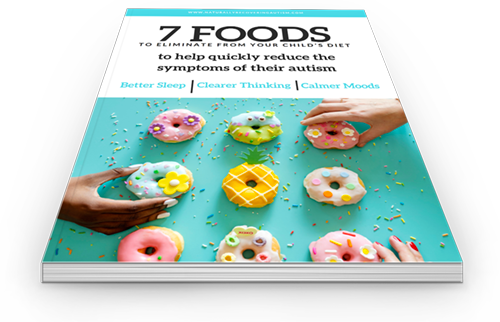Learn the benefits of regenerative farming and Eating Organic Regenerative Foods!
Proper nutrition can create defenses against toxic impact, including those from heavy metals such as mercury, and assisting in its excretion. Nutrition also protects the nervous system in many ways by keeping cell membranes strong or strengthening weak ones, protecting DNA, improving the production of energy within the cells, and reducing inflammation. Proper nutrition also protects the enzyme systems that detoxify the cells and the liver.
What the average person, and the average professional, thinks good nutrition is are often vastly incorrect. Many Americans still think the french fry is a valid, nutritious vegetable and we eat from boxes and cans. A compromised digestive tract does not allow the nutrients from fresh foods to absorb into our cells and fulfill our body’s needs.
Read your labels. Know what to look for. Our foods today are poisoned routinely by large manufacturing companies that choose to add ingredients that are chemical in nature. Many of these foods actually make us crave more food.They also contain sugars and toxins that will invade the central nervous system—this means your child’s brain!
How we grow, feed, and prepare our food is another issue altogether. Conventional food is grown in soil that is so depleted of nutrients to feed the growing crops that when the crop is mature enough to eat, it lacks sufficient quantities of nutrients. We eat food thinking it is giving us the nutrition we need. Most grains, fruits, and vegetables are genetically modified and are grown in toxic pesticides. Our livestock are fed grains grown in these same pesticides, and they are fed antibiotics and hormones that remain in the meat we eat. This means more toxic overload.
Children with autism, ADD, food intolerances, or an improperly working digestive system are already deficient in vital nutrients that their growing brains need. It is never a deficiency of just one nutrient—when one vitamin or mineral is lacking, additional deficiencies develop. These children are usually not absorbing the nutrients from the good foods they eat, and they have a breakdown in the metabolism of nutrients as well. We all need supplementation along with good nutrition, but these children especially do.
Another very important aspect is that our food sources are severely depleted of nutrition due to over-use of soils, therefore limiting them of vital nutrients. Seeds for grain are mutated, often to the point that our bodies do not even know how to digest them. These same grains, also laden with chemicals, are given to the animals that we eat, along with hormones that have been ingested and injected.
When we put this into our bodies, we not only lack what we need for good nutrition, but we ingest so many chemicals ourselves that we need supplementation to combat the toxicity.
The main reason our food today has fewer minerals is that modern farming practices have depleted the soil. Here’s why:
- Overfarming – Farmers grow crops repeatedly on the same land without giving the soil time to rest and naturally replenish its nutrients.
- Synthetic Fertilizers – While these fertilizers help plants grow fast, they often replace only a few key nutrients (like nitrogen, phosphorus, and potassium) but not the full range of minerals found in healthy soil.
- Erosion – Heavy plowing, deforestation, and extreme weather wash away the nutrient-rich topsoil, making it harder for plants to access essential minerals.
- Lack of Crop Rotation – Traditional farming rotated different crops to restore soil nutrients naturally. Modern large-scale farming often skips this, depleting the soil faster.
- Pesticides and Chemicals – These can kill beneficial microbes in the soil that help plants absorb minerals.
Because of this, fruits, vegetables, and grains don’t contain as many essential minerals as they once did, leading to potential nutrient deficiencies in our diets.

Regenerative Farming: The Future of Sustainable Agriculture
As the world faces climate change, soil degradation, and declining biodiversity, regenerative farming has emerged as a powerful solution. This approach not only restores soil health but also enhances food production, reduces carbon footprints, and supports local ecosystems. In this article, we’ll explore what regenerative farming is, its benefits, and how farmers and consumers alike can support this movement.
What Is Regenerative Farming?
Regenerative farming is a holistic agricultural approach that focuses on rebuilding soil health, increasing biodiversity, and improving water cycles. Unlike conventional farming, which often depletes soil nutrients and relies heavily on synthetic fertilizers and pesticides, regenerative farming works with nature to create resilient and productive ecosystems.
Key Principles of Regenerative Farming
- Minimal Soil Disturbance – Avoiding excessive tilling preserves soil structure, enhances microbial life, and prevents erosion.
- Diverse Crop Rotations & Cover Crops – Growing a variety of crops and using cover crops helps replenish nutrients and suppress weeds naturally.
- Integrating Livestock – Rotational grazing and incorporating animals into farm ecosystems enhance soil fertility and reduce reliance on synthetic inputs.
- Composting & Organic Matter – Adding compost and organic matter increases soil’s ability to retain moisture and store carbon.
- Agroforestry & Perennial Plants – Planting trees and perennial crops alongside traditional farming boosts biodiversity and stabilizes ecosystems.
The Benefits of Regenerative Farming
- Soil Health & Carbon Sequestration
Healthy soils act as carbon sinks, pulling CO₂ from the atmosphere and storing it underground. This process mitigates climate change while improving soil fertility.
- Increased Biodiversity
By promoting diverse crops, cover plants, and natural habitats, regenerative farming supports pollinators, beneficial insects, and wildlife.
- Water Retention & Drought Resistance
Healthy soils hold more water, reducing irrigation needs and making farms more resilient to droughts.
- Reduced Dependence on Chemicals
Fertile soil reduces the need for synthetic fertilizers and pesticides, resulting in cleaner water sources and healthier crops.
- Better Yields & Farmer Profitability
While transitioning to regenerative farming requires an initial investment, long-term benefits include higher yields, lower input costs, and better market opportunities as demand for sustainable products grows.
How Consumers Can Support Regenerative Farming
- Buy Regeneratively Grown Products – Look for food labeled as regenerative, organic, or biodynamic.
- Support Local Farmers – Visit farmers’ markets and ask about their growing practices.
- Advocate for Sustainable Policies – Encourage policies that support soil health, biodiversity, and sustainable agriculture.
Regenerative farming is more than just a trend; it’s a necessary shift toward a healthier planet and a more sustainable food system. By embracing these practices, farmers can restore ecosystems, combat climate change, and provide nutritious food for future generations. Whether you’re a farmer, consumer, or advocate, supporting regenerative agriculture is a step toward a more resilient and thriving world.
—So what’s the next step?
Eating Organic Regenerative Foods
Organic regenerative foods are gaining attention as consumers become more conscious of where their food comes from and how it’s grown. Combining the principles of organic farming with regenerative agriculture, these foods are not only free from synthetic chemicals but also produced in a way that actively improves soil health, biodiversity, and climate resilience.
Today, we’ll explore what organic regenerative foods are, why they matter, and how you can incorporate them into your diet.
What Are Organic Regenerative Foods?
Organic regenerative foods come from farms that follow both organic and regenerative farming principles. This means they are:
- Grown Without Synthetic Pesticides, Herbicides, or Fertilizers – Only natural inputs like compost and cover crops are used.
- Produced Using Regenerative Practices – These include crop rotations, no-till farming, composting, agroforestry, and holistic grazing.
- Soil-Enhancing and Climate-Friendly – Instead of depleting nutrients, regenerative farms build healthier soil that captures carbon and retains water.
Why Organic Regenerative Foods Matter
- Superior Nutrition & Taste
Healthier soil leads to healthier plants, which means organic regenerative foods often have higher nutrient density and better flavor. Studies suggest that regeneratively grown foods contain more antioxidants, vitamins, and minerals.
- Environmental Benefits
Regenerative farming goes beyond sustainability—it actively restores the land. Buying organic regenerative foods supports:
- Carbon Sequestration – Healthy soils absorb carbon, helping mitigate climate change
- Biodiversity – Farms practicing regenerative agriculture support pollinators, beneficial microbes, and diverse plant life.
- Water Conservation – Organic regenerative farms improve soil’s ability to retain water, reducing the risk of drought and water runoff pollution.
- No Harmful Chemicals
Unlike conventional farming, organic regenerative farming eliminates synthetic pesticides and fertilizers, reducing harmful chemical residues in food and protecting farmworkers, water sources, and ecosystems.
- Ethical & Sustainable Food Systems
By prioritizing soil health and animal welfare, regenerative organic farms create a more humane and resilient food system. Many also emphasize fair wages and community support.
How to Identify and Buy Organic Regenerative Foods
- Look for Certifications – While “regenerative organic” certification is still emerging, labels like Regenerative Organic Certified® (ROC), USDA Organic, and Biodynamic indicate responsible farming practices.
- Shop at Farmers’ Markets – Talk to local farmers about their practices and look for those using regenerative methods.
- Support Brands Committed to Regenerative Agriculture – Some food brands prioritize sourcing from regenerative farms—research their commitment before purchasing.
- Join a CSA (Community Supported Agriculture) Program – Many CSAs offer organic regenerative produce directly from local farms.
Organic regenerative foods represent the next evolution in sustainable eating. By choosing foods that nourish both the body and the earth, consumers can support a food system that restores rather than depletes. As awareness grows, so does the demand for regenerative farming, making it easier to find and enjoy truly sustainable, nutrient-rich foods.
Start by exploring local regenerative farms and making conscious food choices today!
Underlying toxins, pathogens and coinfections cause inflammation on the brain which causes the damage which creates the symptoms of autism. These symptoms in your child can range from inability to focus and learn to their full potential, sleep disorders, irritability and even aggression.
The good news is it is reversible. I have utilized this successfully with my own son even after I was told it was not possible, but I forged on because of my love for him.
I now have over 18 years of autism research to share with you to help simplify the process and get you real results. We work with all of them in my programs, naturally.
Need help knowing what to do to make your child's life a better one?
As a mother of an autistic child, I understand the worry, frustration, and fear that comes with the diagnosis... and the hopelessness that can stem from failed solutions. Please hear me when I say:
You do not have to settle for behavioral therapies and medications that “manage” symptoms (at best) for the rest of time. There is another way.
In the Naturally Recovering Autism Membership Program, I break down everything A-Z that worked for my son—and thousands of my clients' children—so you can finally, FINALLY, celebrate a solution that works.
This is for informational purposes only and is not meant to diagnose or treat. Every child’s level of recovery is different. No two people are the same. It is never implied that all children will have the same outcome. Results are all based on individual biology and the work that is done. This process takes time and various steps, effort and resources need to be weighed. Our programs are intended to help you become more knowledgeable and guide you to help bring your child a better quality of life, whatever that may be. We want to help by giving great content, direction and strategies that move you forward. Nothing on this page or any of our websites is a promise or guarantee of results or future outcomes. The results on this page and any of our websites are not typical or promised. In fact, there will be people who purchase this and other programs and never put the work into implementing the strategies taught and therefore will achieve little to no results. Our more detailed earnings disclaimer, privacy policy, and terms and conditions for this program and website can be accessed via the links below. We hold ourselves (and you) to a high standard of integrity. We are cheering you on every step of the way.












